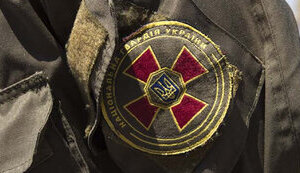Azov’s Prokopenko and Charter’s Obolenskyi commanders head two newly created National Guard corps

The commanders of "Azov" and "Charter" headed the two newly created corps of the National Guard of Ukraine.
This was reported by Censor.NET with reference to the Communications Department of the Ministry of Internal Affairs.
As noted, these are the commander of the 12th Special Forces Brigade "Azov", Colonel Denys Prokopenko (Redis), and the commander of the 13th Operational Brigade of the National Guard "Charter", Colonel Ihor Obolenskyi (Kornet).
"The National Guard has created two corps as part of the overall reform, which is part of the Armed Forces of Ukraine's transition from temporary command and control bodies - operational and tactical groups and tactical teams - to a corps system," said Oleksandr Pivnenko, commander of the National Guard.
According to him, for more effective performance of tasks, it is necessary for the corps commander to be a direct supervisor of his units, to know the brigade commanders, and they know him. He must know and understand the state of affairs and the specifics of his units, the available forces and means.
"That is, for the corps commander to act as a 'united front' on the frontline at the expense of his subordinate units. Indivisible. This has often been one of the problems and main challenges in establishing interaction. Because when one brigade is in one place and the other in another, it is very difficult to manage," the commander said.
"Our brigades have considerable experience, our commanders are experienced and respected not only in the National Guard but also in the Armed Forces," he stressed.
According to Pivnenko, the corps system will significantly improve communication between the military and make the army more efficient. The reform takes into account the experience of the war with Russia, including the need for rapid manoeuvring, resilience to enemy attacks and the ability to hold large areas and conduct counter-attacks. The corps structure should increase the flexibility and resilience of troops and units of the NGU in particular, which are involved in performing tasks at the front.
"This will contribute to more effective coordination of defensive and offensive actions. In addition, information about planning operations will be more limited - only those responsible for planning will know, so there is less chance of leakage of such information. The corps structure itself has already been partially tested in combat zones, in particular in Donbas, where enlarged groups showed better coordination than fragmented groups," he explained.
Pivnenko noted that the decision to create the National Guard corps was supported by the Minister of Internal Affairs of Ukraine, Ihor Klymenko, and the Commander-in-Chief of the Armed Forces of Ukraine, Oleksandr Syrskyi, with whom all the processes were agreed.
"The processes are ongoing. All staffs have been agreed upon, all distributions have been made. The army corps will have their own headquarters, intelligence, artillery and logistics units, which will increase their independence in performing combat missions without the need to constantly involve the higher command at such stages. The corps structure distributes the workload between commands of different levels," he added, noting that, given the active hostilities, the reform cannot be implemented quickly.
"The corps provide for the unification of several NGU brigades and supporting units under a single command. This allows for more effective coordination of actions on large sections of the frontline, optimisation of logistics and resource management," Pivnenko concluded.
